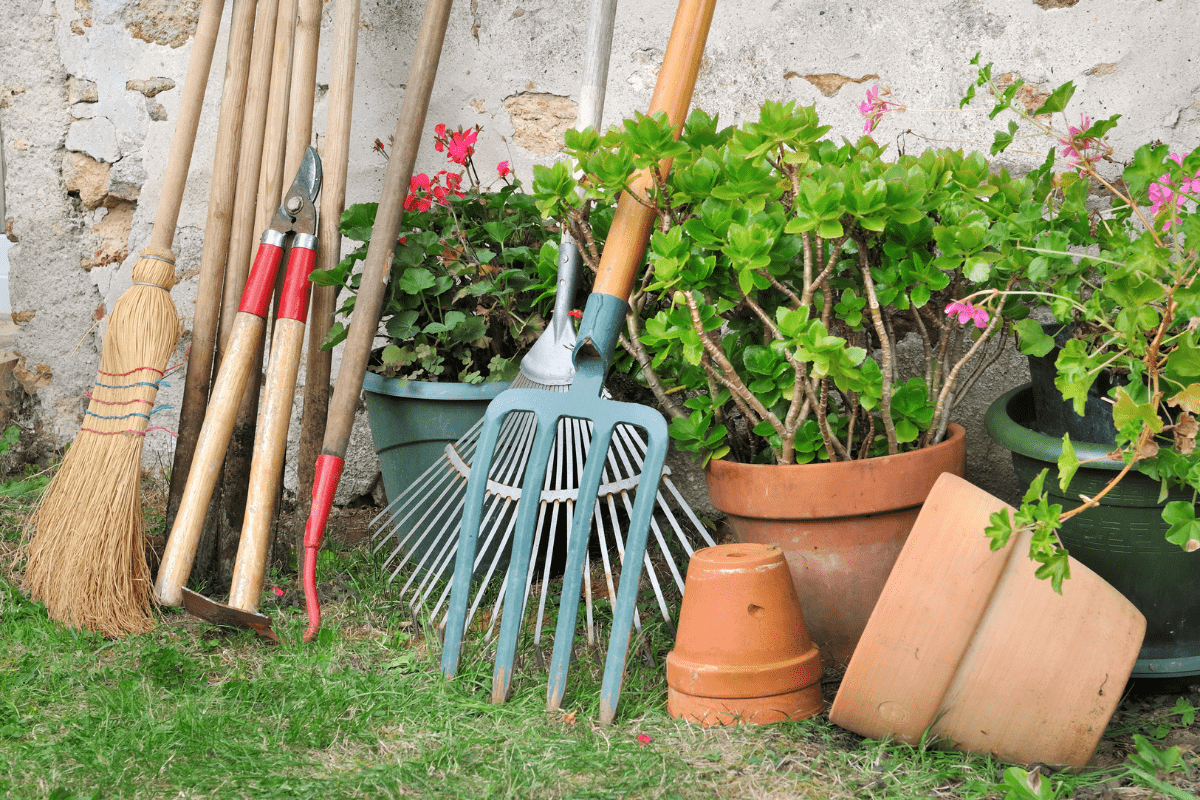Summer's here, which means it's time to tackle those home maintenance tasks you've been putting off since… well, last summer. The good news is that taking care of your home now can save you thousands later, and with warm weather on your side, many outdoor projects are actually enjoyable.
The stuff that absolutely can't wait
Let's start with the maintenance tasks that could turn into expensive disasters if you ignore them. Think of this as triage for your house.
Get your air conditioning ready before the heat hits
Your AC system is about to work overtime, and AC system failure is one of the biggest summer issues homeowners experience. A professional tune-up costs around $150-300, but skipping it could mean a $3,000+ emergency repair when it's 95 degrees outside and your system decides to take a vacation.
Here's what a professional tune-up includes: checking refrigerant levels, inspecting electrical connections, cleaning condenser coils, and calibrating your thermostat. If you're feeling handy, you can handle some basic maintenance yourself.
Monthly DIY tasks:
- Replace HVAC filters quarterly
- Clear 2-foot space around outdoor unit
- Check vents aren't blocked by furniture
- Set ceiling fans counterclockwise for cooling
Pro tip: Setting your ceiling fan to spin counterclockwise pushes warm air down and creates a refreshing breeze. It's a simple trick that could save you money on cooling costs all summer long.
Check your roof before it starts leaking
Roof problems have a sneaky way of announcing themselves at the worst possible moments, usually during a thunderstorm when you can't do anything about them. The average cost for roof repair is $1,471, up nearly 30% from last year, so catching issues early is crucial.
You don't need to channel your inner Spider-Man and climb up there. Start with a ground-level inspection using binoculars to look for damaged, missing, or curled shingles. Check your attic for water stains or daylight peeking through, and keep an eye out for granules in your gutters (a sign your shingles are aging).
Immediate red flags requiring professional help:
- Water stains on ceilings or walls
- Multiple loose or missing shingles
- Sagging areas anywhere on roof
- Flashing damage around chimneys
Clean those gutters (yes, again)
Gutters should be cleaned at least twice a year to prevent damage to your roof and home. Professional cleaning costs $100 or more depending on your home's size, but this is definitely a DIY-friendly task if you're comfortable on a ladder.
The process is straightforward: set up a sturdy ladder with someone spotting you, remove debris by hand working toward the downspouts, flush with a garden hose to check flow, and inspect for rust, holes, or loose connections. Your gutters should slope about ¼ inch per 10 feet toward the downspouts.
Test your safety systems
Summer means more cooking, both indoors and out, so take a few minutes to test smoke detectors and change batteries if needed. While you're at it, test your carbon monoxide detectors and GFCI outlets. These monthly checks take maybe 20 minutes but could literally save your life.
Exterior projects that love summer weather
Summer's stable weather makes it the perfect time for outdoor maintenance that would be miserable (or impossible) in other seasons.
Power wash everything in sight
There's something deeply satisfying about pressure washing. Power washing siding once per season takes a few hours, but your home will look absolutely fantastic by the time you're done. Professional services charge $200-500, but you can rent a pressure washer for $40-80 per day and make it a weekend project.
Target these areas: house siding, driveways and walkways, decks and patios, and outdoor furniture. Just remember to test pressure settings on an inconspicuous area first… you don't want to accidentally strip paint or damage delicate surfaces.
Make sure your deck won't dump guests on the ground
Before you fire up the grill and invite everyone over, inspect your deck supports, floors, stairs, and railings for any damage or hazards that happened over winter. Nobody wants to explain to their insurance company why Uncle Bob fell through a rotten deck board.
Check for loose boards, protruding nails, splinters, and test railings for stability. If you have a wood deck, plan to stain or seal it every 2-3 years. The materials cost $100-400 for DIY, compared to $300-1,200 for professional restoration.
Fix drainage issues before they become foundation problems
Walk around your house during or after a heavy rain and watch where the water goes. Improper grading can lead to water traveling toward your home, resulting in a faulty foundation and a wet basement. Not exactly the summer basement hangout you were planning.
The fix is often simpler than you'd think: you can often correct the issue by adding some topsoil to the problem area. Professional grading correction costs $200-800, but basic fixes with topsoil and a shovel run $50-150.
Quick drainage improvements:
- Add topsoil to foundation low spots
- Extend downspouts 3-6 feet from house
- Create gentle slopes directing water away
- Clear debris from drainage areas
The indoor stuff that makes summer more comfortable
While you're thinking about outdoor projects, don't forget the indoor maintenance that keeps you comfortable when it's blazing hot outside.
Deep clean before the summer rush
Get your floors in shape before summer guests arrive. This means vacuuming and shampooing carpets, cleaning hardwood floors, and scrubbing grout to eliminate any lingering winter grime. Professional house cleaning averages $225 per month, but most of this work is perfectly doable yourself with some elbow grease and the right supplies.
Don't forget about ceiling fans… break out your ladder and use a wet washcloth to dust the tops of the fan blades. You'll probably be running them constantly, so they might as well be clean.
Check your plumbing before peak usage
Summer means more outdoor water use, pool filling, and generally putting your plumbing system through its paces. Inspect the pipes and any appliances attached to outside faucets to see if there is any sign of leaks inside or outside your home.
Also, pay attention to your water bills, as they can be a good indication of a leak somewhere that's not obvious, like an underground sprinkler system. A sudden spike in usage could save you from a much bigger problem down the road.
Smart budgeting that won't break the bank
Let's talk money, because home maintenance currently averages more than $8,800 a year. That sounds terrifying, but spreading it out strategically makes it much more manageable.
Three simple budgeting rules
The 1% rule: Take one percent of the total purchase price of your home and set aside for regular maintenance and repairs. For a $300,000 home, that's $3,000 annually or $250 per month.
The square foot rule: Save one dollar for every square foot of your home. A 2,000 square foot house needs about $2,000 per year, or $166 monthly.
The 10% rule: Put aside 10% of all your main monthly expenses (mortgage, taxes, insurance) for your monthly home maintenance budget.
Pick whichever method feels most realistic for your situation and set up automatic transfers. Future you will be grateful when the water heater decides to retire unexpectedly.
Know when to DIY and when to call professionals
Some maintenance tasks are perfect weekend projects, while others are firmly in "don't try this at home" territory.
Safe for most DIYers:
- Gutter cleaning (single-story homes)
- Pressure washing surfaces
- HVAC filter replacement
- Basic landscaping tasks
Leave these to the pros:
- Electrical work beyond testing outlets
- Major plumbing repairs
- Roof repairs or replacement
- HVAC system repairs
The nice-to-have projects for late summer
Once you've tackled the critical stuff, summer offers great opportunities for projects that improve your home's appearance and value.
Paint projects love summer weather
The weather tends to be perfect for leaving windows open to dry and air out freshly painted rooms indoors. Plus, having a fresh coat of paint outside can really help your home stand up to summer storms and humidity.
Exterior painting is definitely weather-dependent, so take advantage of those perfect 70-80 degree days with low humidity. Your home will thank you when the next thunderstorm rolls through.
Tree maintenance prevents bigger problems
Tree trimming to prune back limbs around the house helps homeowners prevent damage to the roof or gutters during high winds or summer thunderstorms. Professional tree work averages $1,138 annually, but it's much cheaper than roof repair or foundation damage.
Look for branches that touch your house or create "pest bridges" for critters looking for a way inside. Dead or diseased branches near power lines definitely need professional attention.
When to panic (and when not to)
Some problems need immediate attention, while others can wait for your next planned maintenance session. Here's how to tell the difference.
Call professionals immediately:
- Water stains on ceilings or walls
- Electrical outlets feeling warm or burnt smells
- HVAC cycling on/off rapidly
- Foundation cracks wider than ¼ inch
- Large dead tree branches near your home
Emergency repairs are expensive… roof leaks cost $300-1,500, electrical emergencies run $200-800, and HVAC breakdowns can hit $300-1,200. But catching problems early through regular maintenance usually keeps them in the manageable range.
Your summer maintenance game plan
The key to successful home maintenance is having a plan and sticking to it. Start with safety-critical items like HVAC, electrical, and structural issues. Move on to weather-dependent exterior work while conditions are good. Finish with indoor comfort projects and aesthetic improvements.
Essential tool investment (around $300 total):
- Quality ladder appropriate for your home
- Access to tool rental services
- Basic hand tools and safety equipment
- Good flashlight for inspections
Remember to document everything with photos and keep receipts. This information helps with insurance claims and adds value when you eventually sell your home.
The bottom line? 65% of homeowners who experienced problems recognized that they could have been prevented with proactive maintenance. A little effort now saves a lot of money and stress later. Plus, there's something genuinely satisfying about having a well-maintained home that's ready for whatever summer throws at it.
Your future self (and your bank account) will definitely thank you for the time you invest this summer. Now grab that ladder and get started… those gutters won't clean themselves.





